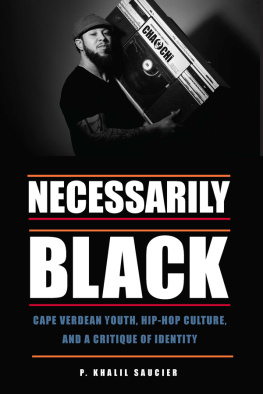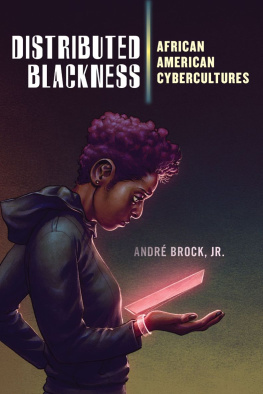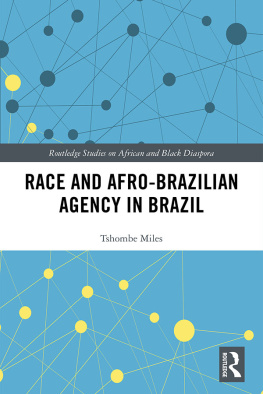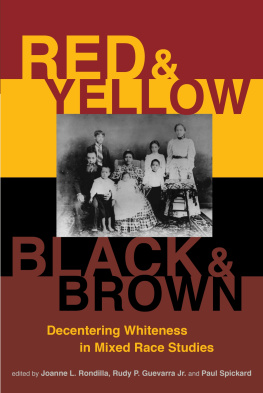2020 by the Board of Trustees
of the University of Illinois
All rights reserved
Library of Congress Cataloging-in-Publication Data
Names: Mitchell, Jasmine, 1981- author.
Title: Imagining the Mulatta : blackness in U.S. and Brazilian media / Jasmine Mitchell.
Other titles: Blackness in U.S. and Brazilian media
Description: Urbana : University of Illinois Press, [2020] | Includes bibliographical references and index.
Identifiers: LCCN 2019052065 (print) | LCCN 2019052066 (ebook) | ISBN 9780252043284 (cloth) | ISBN 9780252085208 (paperback) | ISBN 9780252052163 (ebook)
Subjects: LCSH : Mass media and race relationsUnited States. | Mass media and race relationsBrazil. | Women in mass mediaUnited States. | Women in mass mediaBrazil. | Celebrities in mass mediaUnited States. | Celebrities in mass mediaBrazil. | Racially mixed womenRace identityUnited States. | Racially mixed womenRace identityBrazil.
Classification: LCC P 94.5. M 552 U 663 2020 (print) | LCC P 94.5. M 552 (ebook) | ddc 305.48/80509096dc23
LC record available at https://lccn.loc.gov/2019052065
LC ebook record available at https://lccn.loc.gov/2019052066
Preface
Crossing uneven geographies of oceans and rivers, the ground on which descendants of Black survivors of the Middle Passage, European colonizers, and Indigenous peoples dwell, this book threads an embodied architecture of the Americas. Whether haunted, romanticized, or illegible, the underpinnings of racial mixture go beyond static national borders. The directions of this book, just as the directions of my journey and the passages of my ancestors, slides along multiple constellations. The hemispheric routes of traversing through, within, and in relation to the Americas inform the genesis of this project. Like many women who do not fit into the imagined U.S. racial landscape of Blackwhite binaries, I am often asked where are you from? or what are you? With the U.S. fascination of mixed race as the advent of a new special group, people seldom believe me when I reply that my family has been in the United States for hundreds of years. When I travel outside of the United States, I often receive the same questions as the ingrained U.S.-exported media images largely erase my visibility of U.S. national belonging. Growing up in the 1980s, I rarely saw images of interracial families on television or in film. Mistaken for everything from Moroccan to Colombian to Filipino to Hawaiian, these interactions map race, ethnicity, and nationality onto my own body. My working-class parentsan African American mother from Philadelphia and a white father from semirural Pennsylvaniarecognized this potential illegibility when they purposefully selected our diverse Brooklyn neighborhood because they thought we would be accepted. Growing up alongside Puerto Ricans, community members often assumed that my brother and I were also Puerto Rican and that my father was a light-skinned Puerto Rican man. In white neighborhoods, my mother, just as I now experience with my own two children, was often assumed to be the nanny. At an early age when we would go out as a family beyond our neighborhood, I became accustomed to stares. The notion of racial mixture as also African American often evoked surprise.
My understanding of mixed race and Blackness have evolved over the course of my adulthood, and I now identify as a mixed-Black woman. In college, I created an organization called Students of Mixed Heritage to give students like me at Williams College a space for discussions about race and ethnicity. We did not think of ourselves as separatists but as working in conjunction with other minority groups such as the Black Student Union. However, by the mid-2000s, I was wary of the idea that mixed-race heritage is special. Seeing the influx of multiracial images and the rhetoric of mixed-race people as a new development within U.S. culture, I became skeptical of the political stakes of the discovery of mixed-race people as new phenomena.
Like many descendants of enslaved African Americans, my mothers side of the family runs the gamut of skin tones. Our family histories illustrate the terrain of how racial mixing is not new and has not created racial paradise thus far. My earliest known ancestor on both maternal and paternal sides, Amanda, was a light-skinned African American woman who was born into U.S. chattel slavery. The photograph of her that my relatives discovered in the late 2000s reveals a body that could be read as white. The recovery of Amandas photograph is also a re-membering of mixture within Blackness. She, like many other relatives, reflects African American and hemispheric histories of racial mixing interwoven within the legacies of slavery and colonization in the Americas. For Amanda, descended from my maternal grandfathers side, the written historical narratives are incomplete, and the family stories and imagined futures are what we have left. Like much of the fabric of African American histories, the relatives on my grandfathers side have been registered as negro, mulatto, colored, and Black. Like many of my relatives, my grandmothers side of the family had light-skinned members from my great-grandmother and dark-skinned members from my great-grandfather. Stories of Indigenous kinship and mixture also wove into larger family narratives. Within this larger family of variant skin and eye colors, hair textures, and sprinkled freckles, everyone belonged.
As a child, I spent many summers at my grandparents house in West Philadelphia. While surrounded by generations of extended family, I loved hearing of familial farmland stories in the Carolinas, urban migration to the Northeast, and journeys beyond the geographical bounds of the United States. The Love and Reeder clans were proud of their achievements. Nestled within these enclaves, my racial identity was part of larger stories of the mixedness within Blackness. Along with our own histories as models, my grandparents, great-uncles and -aunts shared books and conversations of Black histories and traditions evidencing a sense of Black diasporic pride. Yet, some family members often commented on my fairer skin and my hairline, which curls on the underside but could be tussled until straight on the top. Like much of Latin America in which phrases of Black behind the ears are commonplace, the privileges attuned to the proximities of whiteness reverberate down generations through the very structures and intimacies of our families. Immense Black pride alongside the valuing of slim, light-skinned, wavy-haired bodies, illuminates the messy imperfections of Black histories. While I also spent parts of summers with my fathers sides of the family in rural and semirural settings and enjoyed the loving and nurturing connections, I knew that I belonged in the family but not to whiteness. Embarked with a scholarship to Phillips Academy Andover in Massachusetts, I navigated multiple environs of white upper-class privileges alongside national, racial, ethnic, and socioeconomic diversity within the school. I had learned from childhood to move between many worlds. But, I would not be considered white in any of these worlds. While my racial ambiguity positioned a flexibility that many Blacks in the United States do not have, the constant questioning, policing, and fascination of my racial background revealed a national obsession with managing and categorizing Blackness.








